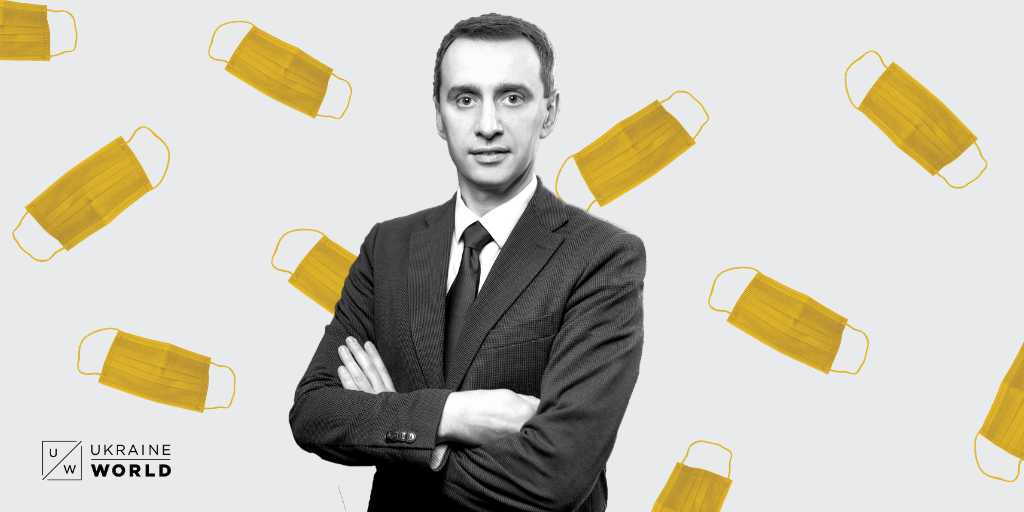
Against the backdrop of lifting quarantine restrictions, Ukraine registered a record high number of coronavirus cases on 11 June. By the next day, Ukraine confirmed almost 30,000 cases of the coronavirus disease, fewer than 14,000 recovered from the disease, and 870 total fatalities.Chief Sanitary Doctor of Ukraine Viktor Liashko said that this is due to the removal of queues in laboratories for coronavirus tests. Despite the increase in positive diagnoses by 683 cases (as of 12 June), Ukraine remains behind many European countries in its number of patients with COVID-19. To compare, it has almost 8 times fewer coronavirus cases than Italy, where numbers are going down. At the same time, the number of tests performed per million people is also almost 6 times lower in Ukraine than in Italy (as of 12 June).
Here are the key points that Dr. Liashko shared with UkraineWorld and Ukraine Crisis Media Centre to get a better understanding of the situation.
Liashko is convinced that Ukraine, unlike many European countries, avoided a lot of trouble by introducing strict quarantine and anti-epidemic measures at the very beginning of the pandemic instead of waiting for the rapid growth of cases. A range of anti-epidemic measures, Dr. Liashko tells UkraineWorld, has allowed Ukraine "to reach a certain plateau...to prevent the paralysis of the healthcare system and provide medical help to everyone who needs it".
In addition to the granted time to prepare the healthcare system, he says that Ukraine's rapid response helped to develop laboratory capacity. According to Dr. Liashko, from February to June the number of tests increased by a factor of 200. "Before, our capacity allowed us to conduct around 50 tests a day. Now we can perform 12-15,000 tests daily," he explains.
With the time Ukraine gained from its early lockdown, Liashko says Ukraine's hospital bed occupancy rate right now does not exceed 12%, and only 7-8% of all ventilators designated for treating patients with coronavirus disease are being used. This, Liashko stresses, shows that "the situation with the spread of coronavirus in Ukraine is under control".
"Sure, we haven't achieved a steady decrease of coronavirus morbidity rate. At the same time, however, we understand that the coronavirus disease will make us live in a little bit of a different reality. That is why now we are thinking more about how to control the morbidity rate rather than how to decrease it," he says. The major task for the Health Ministry, he tells us, is preventing the pandemic from reaching the healthcare system's peak capacity, while slowly mitigating the quarantine with regards to bed occupancy.
"As with other countries, Ukraine is getting ready for a possible second wave of the coronavirus disease," Liashko says. "At the same time, we are doing everything possible to find a middle ground between economic recovery and keeping the situation under control." With the gradual lifting of anti-epidemic measures in this regard, Ukraine is planning to reconsider its quarantine restrictions on 22 June. Along with other mitigations of the adaptive quarantine, from 15 June Ukraine will be partly removing entry restrictions for foreigners and reopening air travel with other countries. Notably, mutually open borders is the condition recently set by the EU to allow travel for non-EU citizens.
As for future actions in case of a second wave, Dr.Liashko tries to extrapolate from Ukraine's experience with the seasonal flu. Historically, mid-October and the end of November are known for "significant increase in flu and flu-like diseases." Besides reducing the spread of these diseases, Liashko stresses the importance of preventing the coronavirus pandemic from combining with the seasonal outbreak of the flu to create an even more severe crisis.
To do this, Ukraine might introduce vaccination against flu this year, "at least for medical groups with professional risk, and for law enforcement employees." While seasonal flu vaccination is still far from a massive habit in Ukraine, the Ministry plans to change this. "We will conduct active communication campaigns to get the [Ukrainian] people to vaccinate more. And we will work with the vaccine producers and distributors for Ukraine to get enough vaccines against the flu," Liashko explains.
Although the number of cases is not decreasing, Liashko stresses that "the number of hospitalizations and severe cases is dropping significantly."
The threat of a second wave remains. But Dr. Liashko also sees some positive tendencies. "The virus is losing its intensity," he notes. Although the number of cases is not decreasing, Liashko stresses that "the number of hospitalizations and severe cases is dropping significantly."
Meanwhile, he hopes Ukraine will not have to deal with a second wave, and that researchers will have developed a medical treatment for COVID-19 or a vaccine against the coronavirus before it hits again.
The interview was prepared jointly by UkraineWorld and Ukraine Crisis Media Centre
